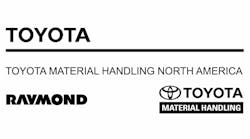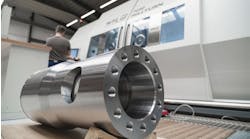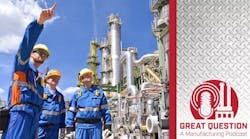Podcast: Are you Using these 7 Steps for an Efficient Plant Turnaround?
Plant turnarounds are complex, high-stakes projects that require flawless execution to avoid costly downtime and disruptions. In this episode of Great Question: AManufacturing Podcast, New Equipment Digest editor-in-chief Laura Davis shares industry expert Mike Aughenbaugh's seven essential steps that plant owners and operators can take to ensure their next turnaround is a resounding success.
From engaging early with trusted suppliers to maintaining tight quality control, Aughenbaugh's insights draw on years of hands-on experience helping chemical facilities and refineries navigate these challenging undertakings. Whether you're planning an upcoming turnaround or simply want to learn more about best practices in this domain, this article is packed with tactical advice you won't want to miss.
Below is an excerpt from the transcript:
The decision to do a plant turnaround is not one made lightly. Chemical plants and refineries across the globe undergo these challenging projects with the help of hundreds of technicians from multiple vendors working on different parts of the plant at the same time. Whether the work involves maintaining, revamping, or renewing a specific system or an entire plant, coordinating the various disciplines and their efforts can be daunting.
One of the most complicated aspects of a plant turnaround is stopping production completely while the work is being done. Since any system downtime results in lost revenue, most plant owners and operators will want to do the job as quickly as possible without sacrificing quality. Longer-duration turnarounds keep contractors on-site and can add costs and risks to the project.
In larger plants, proper plant turnarounds may require years of foresight and planning because of the enormous investment of time and money. Therefore, making sure the turnaround runs smoothly is essential.
Suppliers are operating differently since 2020, and your procurement process should change to include the following seven steps:
1. Engage Early With Trusted Suppliers
Deciding to engage in a plant turnaround is not a spur-of-the-moment determination. Sometimes, the planning begins years before a vendor steps foot in the plant. The reason for such extensive planning is to anticipate as many scenarios as possible and have contingency plans to deal with them.
To make sure a plant turnaround starts properly, owners should reach out to critical parts and service suppliers early in the planning process. Industrial fluid systems often require highly specific parts and components, which may have extended lead times to acquire. Engaging with component suppliers early can ensure you have the necessary parts on hand for installation.
2. Identify Areas of New Opportunity
Another reason to engage early with trusted vendors is to identify potential areas where systems can be improved, resulting in higher reliability and better performance. Understanding where these opportunities are before work begins can provide a road map to a successful operation.
Working closely with vendors early on can improve the pre-planning involved in the turnaround and can lead to innovative solutions. Doing so also helps to ensure there's adequate lead time to secure approval from ownership, while also minimizing the chance of running afoul of management of change (MOC) requirements. Finally, vendors will assess your system without preconceived notions of how the system currently works. This “fresh eyes” approach from experts can lead to previously unrealized enhancements.
One possible enhancement might be using pre-engineered and preassembled grab sampling panels. Practically speaking, this approach can improve system performance without fundamentally changing the overall design. Additionally, such preconfigured panels make it easier for technicians to collect necessary samples properly.
About the Podcast
Great Question: A Manufacturing Podcast offers news and information for the people who make, store, and move things and those who manage and maintain the facilities where that work gets done. Manufacturers from chemical producers to automakers to machine shops can listen for critical insights into the technologies, economic conditions, and best practices that can influence how to best run facilities to reach operational excellence.














